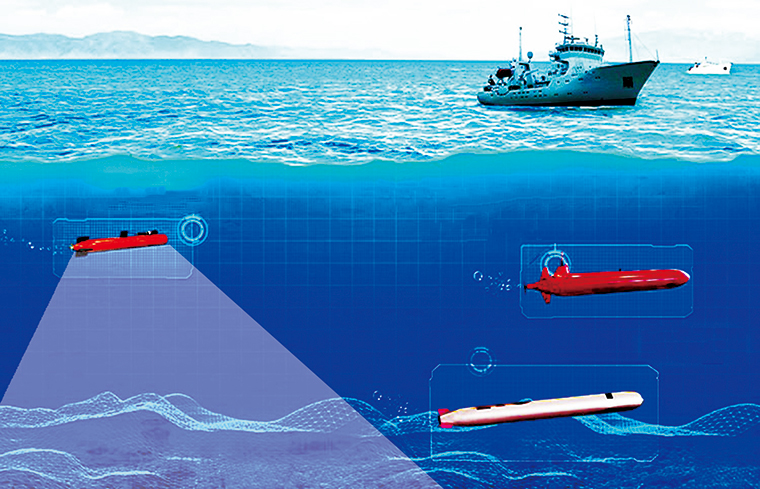October 19, 2025
Street Food
Unmanned submersible: the "wolf group" on the sea floor is coming
**Unmanned Submersible: The "Wolf Pack" on the Ocean Floor Is Approaching**

**Meet the Individual Soldiers –**
**Underwater Strange "Fish" Gods Infested**
Beneath the dark, turbulent waters, where currents shift unpredictably and conditions are harsh, the challenges of underwater operations are immense. In response to these difficulties, an advanced underwater unmanned combat system has emerged — one that includes autonomous submersibles capable of operating independently in the deep.
Early models of unmanned submersibles were either tethered or untethered. Tethered versions relied on a long cable connected to a mother ship for power and control, making them more like “companion†units used mainly for salvage, maintenance, and inspection tasks. Untethered models, however, have greater autonomy, allowing them to operate independently as long as they have sufficient energy reserves.
In recent years, large-scale unmanned submersibles have become a focus of military interest. The U.S. Navy envisions these systems performing a wide range of tasks, from intelligence gathering and reconnaissance to patrolling key waterways, collecting data before naval operations, and even conducting combat missions.
One example is the "Starfish" submersible, introduced in 2014 by the U.S. Navy’s 5th Submarine Development Squadron. It measures 8.2 meters in length and can dive up to 1,000 meters, with a 72-hour operational duration. Its ability to communicate over line-of-sight and beyond-the-horizon makes it a promising candidate for future large-scale underwater systems.
The final version of the "Snake Head" submersible is expected to be equipped with weapons or electronic warfare systems, enabling it to counter enemy sensors, mines, and even attack surface ships or shore targets. It was launched in 2019 and represents a major step forward in underwater combat capabilities.
In addition, the U.S. Navy has proposed a "large displacement unmanned submersible" capable of operating for up to 120 days. With a displacement of up to 10 tons, it could perform a variety of combat missions and was expected to be deployed by 2020. These systems are also being explored for long-term reconnaissance and surveillance due to their low cost, low power consumption, and long endurance.
Another project under development is the "floating effective preloads" submarine drone, which can remain hidden on the ocean floor for years, then rise quickly to the surface upon command to carry out combat operations.
**Look at the Cluster –**
**"Ghost Fleet" Will Appear**
As underwater unmanned technology advances, the battlefield is becoming increasingly dominated by autonomous systems. According to a report by the U.S. Navy titled "Information, Surveillance and Reconnaissance Roadmap," by 2020, the U.S. military aims to deploy a new class of underwater unmanned forces, with at least 1,000 units by 2020 and reaching 2,000 by 2025.
Currently, the U.S. Navy is developing a "ghost fleet" composed of aerial, surface, and underwater unmanned systems. These submersibles can form coordinated "clusters" and work in conjunction with submarines, surface ships, and aircraft.
However, building such a cluster is no easy task. The U.S. Navy’s Master Plan for Unmanned Underwater Vehicles outlines nine specific roles for these systems, including intelligence gathering, anti-submarine warfare, mine detection, and creating communication and navigation platforms.
To achieve true coordination, many technical challenges must be overcome. Deep-sea communication, precision navigation, and stealth are all critical areas of research. Technologies like blue-green laser communication, quantum communication, and the development of an underwater Internet of Things are paving the way for more reliable and faster underwater networks.
**Look at the Future –**
**High Intelligence Is the Way Forward**
Previously, most unmanned submersibles required direct human control and performed limited tasks. However, as the number and complexity of these systems increase, so do the demands on their command and control systems.
Future submersibles must be able to act autonomously for long periods, interact with their environment, and detect and identify underwater objects without constant human input. This requires a higher level of artificial intelligence and decision-making capability.
Moreover, future systems will need to work seamlessly with both other submersibles and manned platforms. Sharing sensor data, maps, and real-time information will allow for a more integrated and responsive combat system.
To support this, underwater unmanned systems must also improve interoperability, communication, and data processing. A secure and universal data link is essential for maintaining continuous connectivity between different platforms.
Another challenge is the limited battery life of current unmanned submersibles. Most rely on batteries that require frequent recharging, limiting their operational range and increasing the risk of capture. To address this, the U.S. Navy is exploring the concept of an underwater charging station — a "logistics hub" where submersibles can recharge, upload data, and receive new instructions. This would significantly enhance their independence and enable them to undertake more complex and dangerous missions.
Special Material Braided Sleeve
Special Material Braided Sleeve,Heat Proof Sleeve,Heat Proof Wire Sleeve,High Temperature Cable Sleeving
Shenzhen Huiyunhai Tech.Co., Ltd. , https://www.cablesleevefactory.com